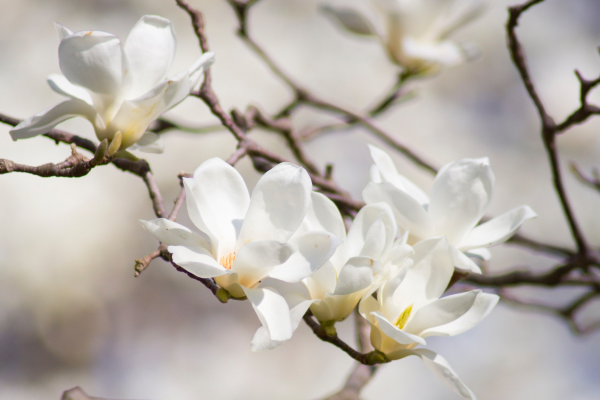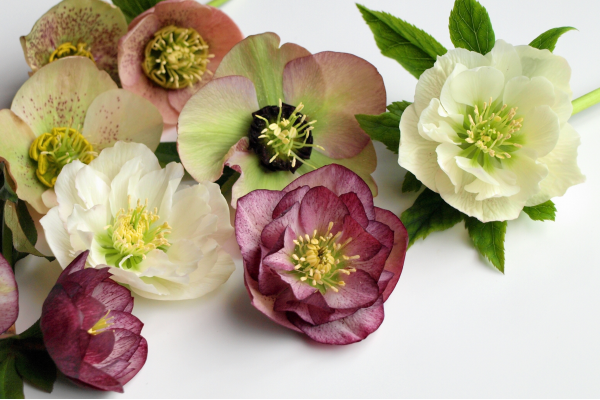
February Jobs in the Mediterranean Garden
The cold weather has dominated gardener’s lives recently and I’ve been swamped with queries on how to handle this unexpected wave of cold weather. For many of you in other areas of Spain, it has been at a once-in-a-lifetime level – or so we hope!
Cold Prevention: December I advised that young/newly planted fruit trees such as citrus, mango and avocado be wrapped – I hope that lots of you did that. If you didn't, it’s still not too late if you are concerned – we could still get more cold conditions. Mulch around the root area too; old leaves will serve. General plantings can be protected by erecting a wind break. Green fabric may not look very pretty but it is effective; or, more naturally, push cuttings of evergreen prunings into the ground, criss-
crossing them – cypress branches/palm leaves are a good option. If you’ve beds of succulents and cacti, throw a blanket of fleece over them. If snow falls, clear it away from your plants as soon as possible; it will certainly burn fleshy plants, affect palm hearts, weigh down branches etc.
Remember that pot plants are particularly vulnerable – their roots do not have the thick mass of soil to protect them that their planted counterparts have. Wrap pots and even entire plants. Grouping your pots together will also help so that they can snuggle up to each other and keep warmer.
Cold Damage, How does it Look: Cold damage can show in various ways and sometimes takes time to show. Stems can collapse and wilt; pale brown burn marks show on leaves and, in severe cases, will blacken. Early fruit blossoms that are damaged form a corky layer at their base, preventing the formation of fruit. Succulents and cacti can blacken and shrivel in extreme cases or go mushy. Snowflakes leave pocked marks.
Cold Damage, Recuperation: In perennials, shrubs and trees do not prune back the damaged material until you are sure that the danger of more frost/snow has passed. Although damaged, it still provides some protection to the rest of the plant and pruning will provoke new tender growth. When you can safely prune, apply a general-purpose fertiliser to help your plant along. If badly damaged do not give up too early; plants will often regenerate from the base. With succulents, similar treatment. Do not be too hasty to cut away damaged leaves but, when you do, cut back to healthy green material. Then you will have to wait until the plant grows and disguises the damage. Make sure all plants are still firm in the ground – heavy frosts and wind can move them.
Good gardeners know how to move on – so let’s!
Heavy Jobs: Colder weather give us a chance to do the jobs that really make you sweat! Digging and preparing ground. But winter is also a good time to paint walls, fences etc. whilst climbers are bare and pruned back.
Reseal or paint garden furniture too.
Irrigation: I’m sure you will all have irrigation systems turned off so do check evergreens, small bedding plants and pots – wind can dry them out severely and they may need some water. Don’t water palms, yuccas, bananas and other semi-tropicals during cold weather – they are not in active growth and their roots can rot.
Planting: Don’t plant during freezing conditions but once you can get to it again, do consider using mycorrhizal fungi. It comes in a fine granular form and the fungi increase the spread of the roots, thus increasing water and mineral uptake. It gives you stronger, healthier plants and decreases your water bills. Winning combo and we have it at the garden centre.
Springtime: It’s just around the corner, light levels are increasing and, surely, temperatures too! Autumn-planted bulbs are just starting to peek through – clear around them so they can be properly appreciated.
First Sowings: You can make first sowings of hardy annuals if you have a greenhouse/conservatory/propagator/warm windowsill. Some seeds take 2 or 3 weeks to germinate, by then we’ll almost be into March. The flower of 2017 is the zinnia and they are fab for our hot summers, so get some started over the next couple of weeks and be at the height of fashion!
A Little Tip: Whilst you’ve got the fire going, remember that wood ash is very good sprinkled around your fruit trees. It’s also great around roses and bougainvilleas – it will deepen their flower colour.
Job of the Month: Show your soft side – build a romantic Valentine’s arbour smothered in scented and beautiful climbers!
Plant of the Month: One to smother your arbour (not ardour!) – jasminum polyanthemum, spring-flowering jasmine. Deliciously scented and oh-so-romantic!


